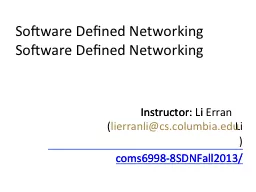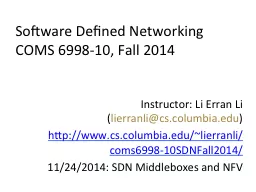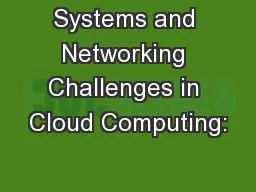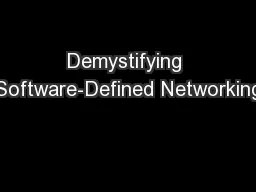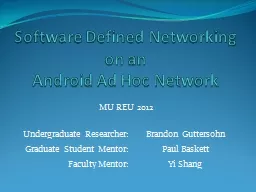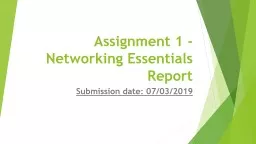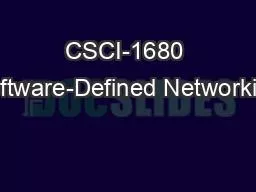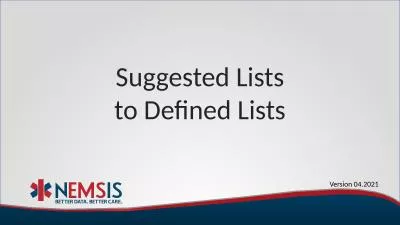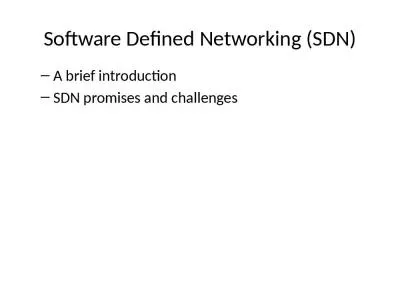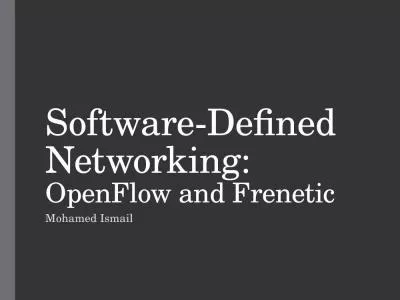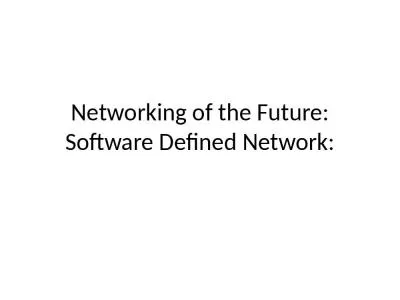PPT-Software Defined Networking
Author : liane-varnes | Published Date : 2016-06-25
COMS 6998 8 Fall 2013 Instructor Li Erran Li lierranlicscolumbiaedu httpwwwcscolumbiaedulierranlicoms69988SDNFall2013 10 29 2013 SDN Traffic Management Outline
Presentation Embed Code
Download Presentation
Download Presentation The PPT/PDF document "Software Defined Networking" is the property of its rightful owner. Permission is granted to download and print the materials on this website for personal, non-commercial use only, and to display it on your personal computer provided you do not modify the materials and that you retain all copyright notices contained in the materials. By downloading content from our website, you accept the terms of this agreement.
Software Defined Networking: Transcript
Download Rules Of Document
"Software Defined Networking"The content belongs to its owner. You may download and print it for personal use, without modification, and keep all copyright notices. By downloading, you agree to these terms.
Related Documents


